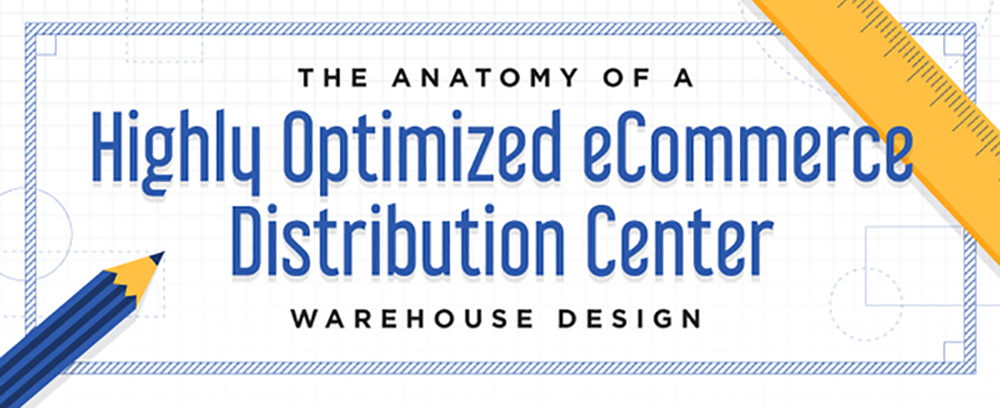
Components of an eCommerce Distribution Center Warehouse Design (infographic)
There was a time when the company warehouse was a forlorn shed in the middle of nowhere, a spot where overstock items, customer returns, and little-used supplies could be kept out of the way. All of the “good stuff” was on retail shelves.
Fast forward to 2022 and the rise of eCommerce.
The company warehouse is no longer just a warehouse, but a high-functioning distribution center (DC) that is at the forefront of business operations.
The demands on the modern DC are plentiful.
It must be able to handle a non-stop flow of traffic, provide a framework hospitable for 24-hour delivery, and offer an environment conducive to both human and automated workers.
And it must be able to accomplish all of this in a business climate that has seen unprecedented rises in costs and sustainability demands.
As a result, some of the most prominent features of contemporary ecommerce warehouse design include:
- Smaller facilities located closer to population centers
- Increased height to allow for more racks and better optimization of vertical space
- Innovative building materials that improve worker comfort and enhance energy efficiency
While these are a few of the most general trends in distribution center design, they far from tell the whole story of how scientific DC design has become.
Keep reading the comprehensive infographic below to find out everything there is to know about eCommerce DC design in 2022.
A highly-optimized distribution center design is the key to efficient operations. Modern DCs are all about mobility and leveraging available space to its fullest potential to maximize utilization and production. Use these design trends to get products to customers as quickly and affordably as possible.
* This article and infographic have been written and created by Allied Steel Buildings. Allied delivers pre-engineered, prefabricated metal building projects within the commercial, manufacturing, cold storage markets, and more.







